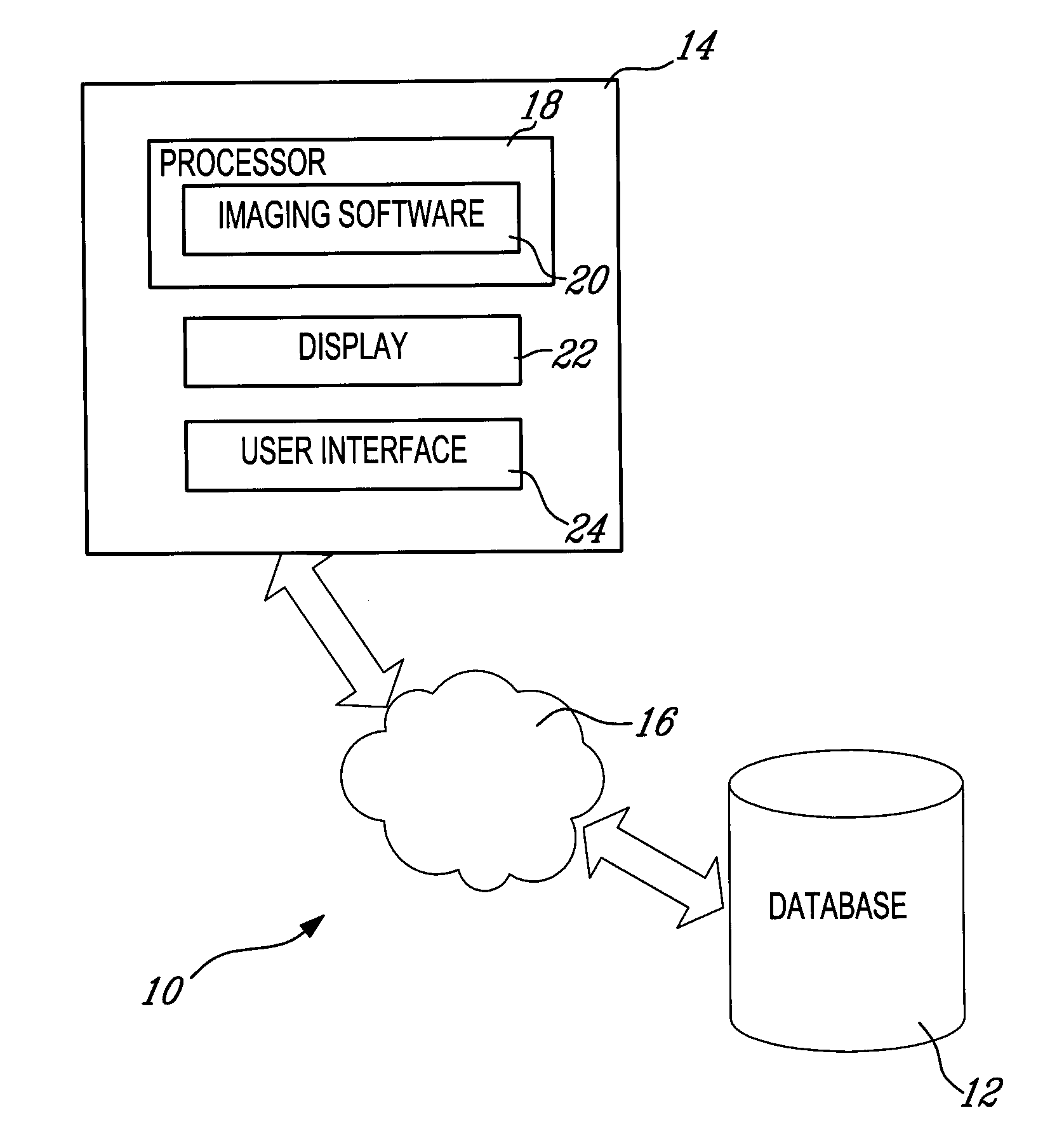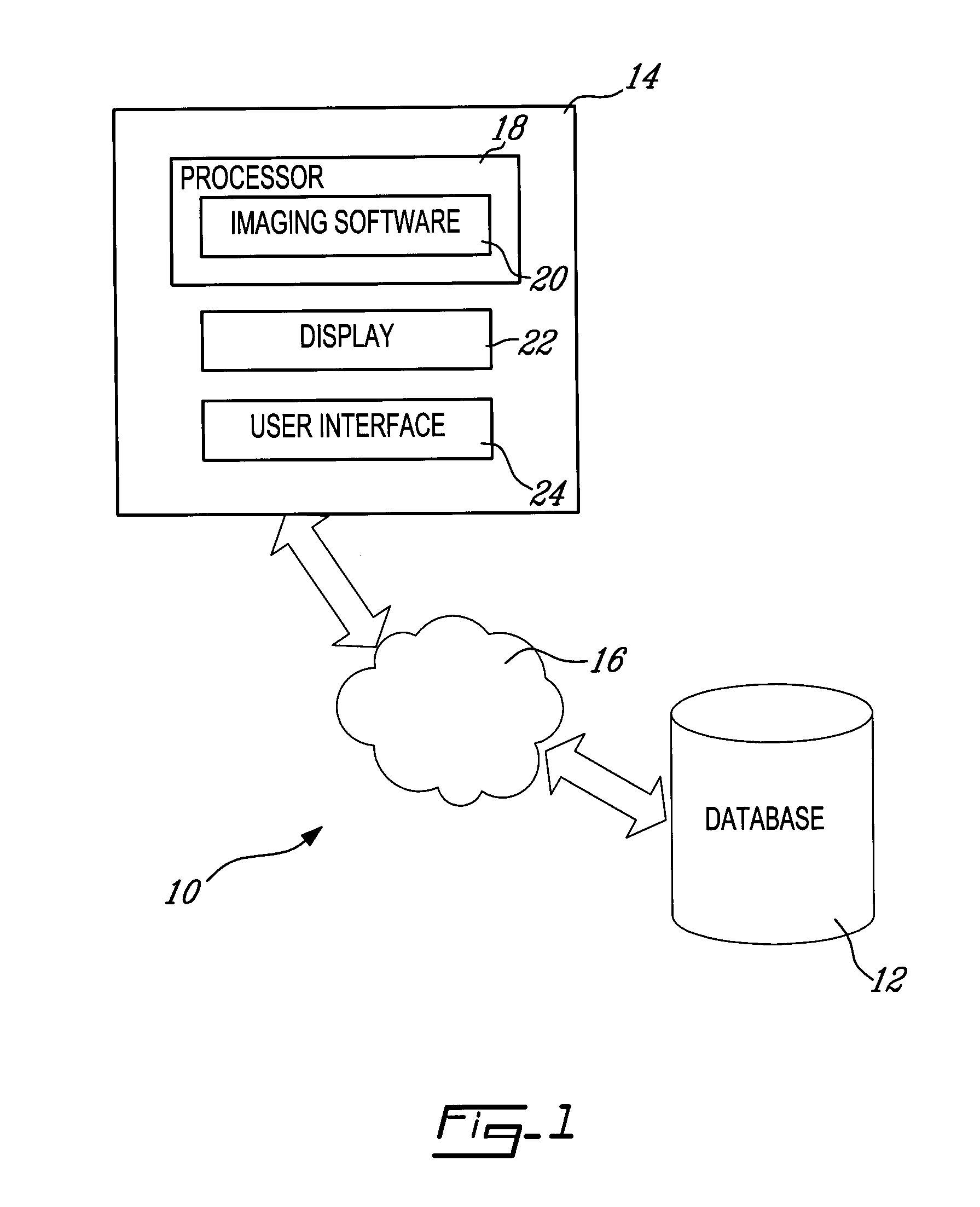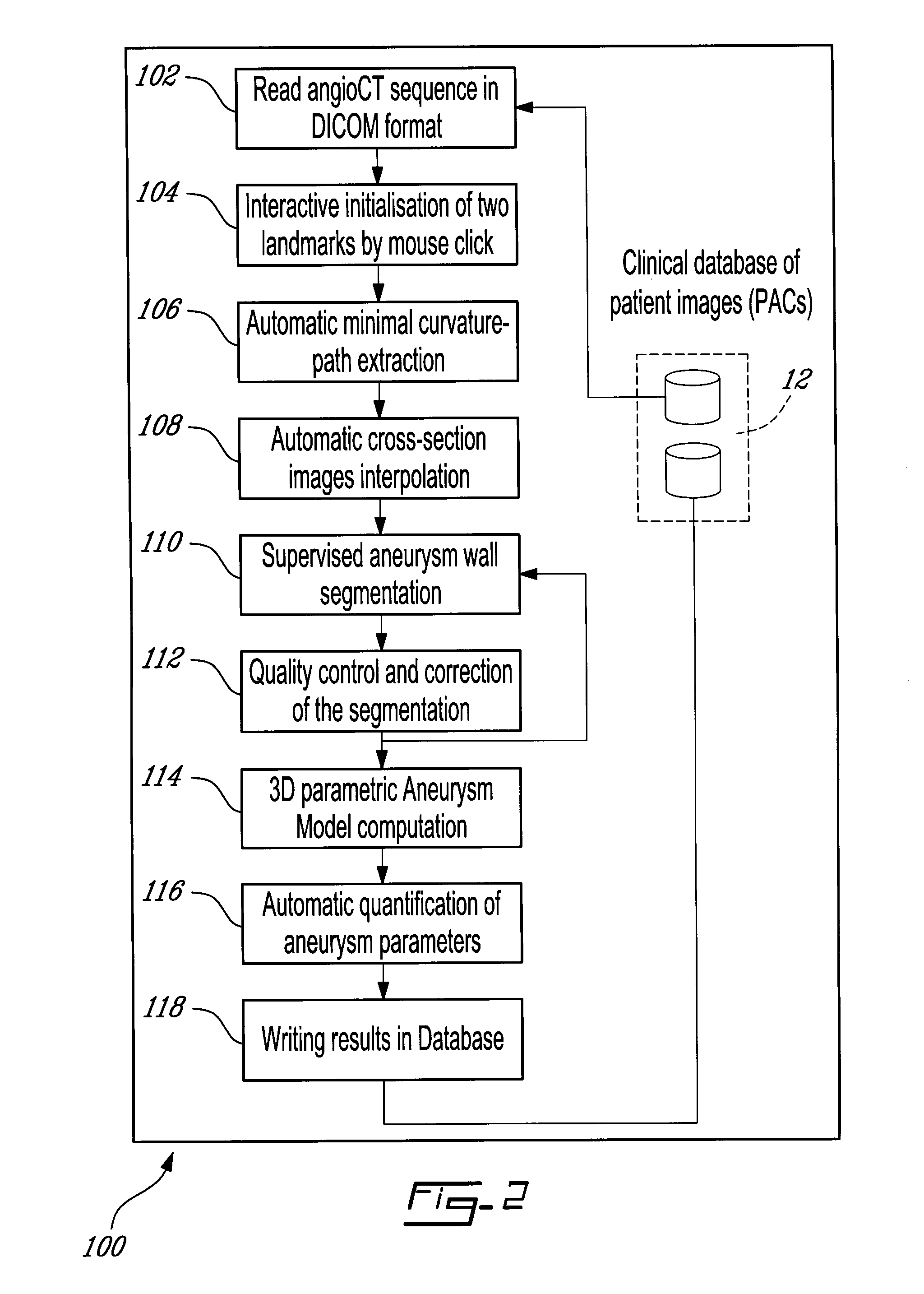Method for tracking 3D anatomical and pathological changes in tubular-shaped anatomical structures
a tubular-shaped anatomical and pathological technology, applied in the field of 3d anatomical and pathological changes in tubular-shaped anatomical structures, can solve the problems of different inconsistent definitions of the dsub>max /sub>parameter, take a significant amount of time to extract information, and cannot achieve optimal results
- Summary
- Abstract
- Description
- Claims
- Application Information
AI Technical Summary
Benefits of technology
Problems solved by technology
Method used
Image
Examples
Embodiment Construction
[0034]The present invention is illustrated in further details by the following non-limiting examples.
[0035]Referring to FIG. 1, and in accordance with an illustrative embodiment of the present invention, a system for processing and analyzing medical images, generally referred to using the reference numeral 10, will now be described. The system 10 comprises a database 12 for storing patient images and a workstation 14 for accessing the stored images through a communications network 16, such as a Local Area Network (LAN). The workstation 14 comprises a processor 18, on which an imaging software module 20 responsible for processing images retrieved from the database 12 is installed. The workstation 14 further comprises a display 22 and a user interface 24 (e.g. a mouse and keyboard), which enable users to interact with the imaging software 20 by displaying and manipulating image data in response to input commands. The display 22 and the user interface 24 thus enable users to visualize ...
PUM
 Login to View More
Login to View More Abstract
Description
Claims
Application Information
 Login to View More
Login to View More - R&D
- Intellectual Property
- Life Sciences
- Materials
- Tech Scout
- Unparalleled Data Quality
- Higher Quality Content
- 60% Fewer Hallucinations
Browse by: Latest US Patents, China's latest patents, Technical Efficacy Thesaurus, Application Domain, Technology Topic, Popular Technical Reports.
© 2025 PatSnap. All rights reserved.Legal|Privacy policy|Modern Slavery Act Transparency Statement|Sitemap|About US| Contact US: help@patsnap.com



